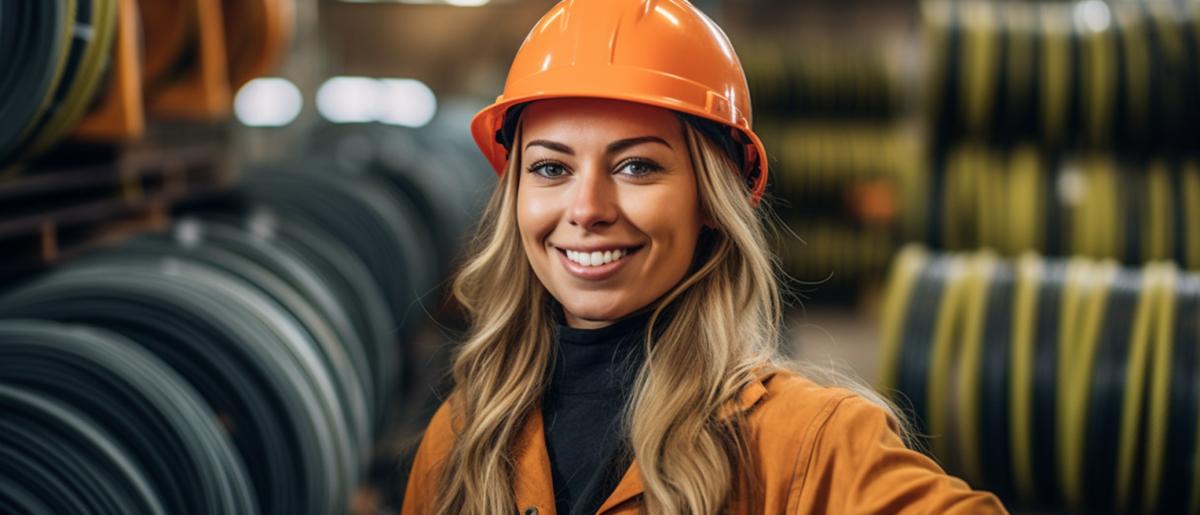

As a Rope Manufacturer in Australia, having the right equipment is crucial to ensure the smooth operation and success of your business. Whether you need to upgrade your existing machinery or invest in new equipment, equipment finance can play a vital role in helping you achieve your goals. Equipment finance refers to the financial solutions available for businesses to acquire the necessary equipment for their operations. It provides an alternative to purchasing equipment outright, allowing businesses to preserve their working capital and maintain a healthy cash flow. By opting for equipment finance, Rope Manufacturers can access the equipment they need without the burden of large upfront costs. One of the key advantages of equipment finance is its flexibility. It allows you to choose from various financing options that suit your specific needs. Whether you prefer leasing, hire-purchase, or equipment loans, there are options available to accommodate your budget and business requirements. Additionally, equipment finance offers tax benefits for Australian businesses. Through specific finance structures such as a chattel mortgage or a finance lease, you may be eligible to claim tax deductions on the interest paid and the depreciation of the equipment. Not only does equipment finance provide financial flexibility and tax benefits, but it also enables you to stay up-to-date with the latest technology and advancements in the Rope Manufacturing industry. By regularly upgrading your equipment through financing, you can ensure that your business remains competitive and efficient in meeting the demands of your customers.
Compare over 40+ lenders with one application.
Equipment finance is an essential financial solution for Rope Manufacturers in Australia. It enables businesses to acquire the necessary equipment and machinery without having to make a significant upfront investment. Equipment finance works by providing businesses with the option to lease or obtain a loan for the equipment they need. This allows Rope Manufacturers to access the latest and most advanced equipment in the market, without the need for large capital outlays. When opting for equipment finance, Rope Manufacturers can choose between different financing options based on their requirements. Leasing is a popular choice, as it offers flexibility in terms of equipment upgrade cycles and monthly payments. With a lease, the equipment is rented for a specified period, and at the end of the lease term, the business can choose to return, upgrade, or purchase the equipment at a predetermined price. Alternatively, Rope Manufacturers can opt for equipment loans, which involve borrowing the funds required to purchase the equipment outright. Equipment loans typically involve a fixed interest rate and regular repayments over a set period of time. To initiate the equipment finance process, Rope Manufacturers will need to provide relevant information about their business and the equipment they wish to finance. Depending on the finance provider, additional documentation and financial statements may be required. Overall, equipment finance offers Rope Manufacturers in Australia a flexible and convenient way to acquire the necessary equipment for their operations. The ability to access the latest technology and equipment without the burden of large upfront costs is advantageous for businesses looking to remain competitive and efficient in the fast-paced Rope Manufacturing industry.
Learn about eligibility and how to apply.
Rope Manufacturers can leverage equipment finance to acquire essential machinery and tools for their operations. This includes rope-making machines, braiding machines, and splicing tools. These equipment enable efficient production, enhance rope quality, and simplify the manufacturing process.
Here are some common types of equipment Rope Manufacturers can purchase with equipment finance:
Rope Making Machines
Rope making machines are specialised equipment used by Rope Manufacturers to create different types of ropes with varying strength and thickness. These machines automate the rope-making process and ensure consistent quality.
Braiding Machines
Braiding machines are essential for Rope Manufacturers to create braided ropes. These machines enable the weaving and intertwining of multiple strands of fibre or wire to produce ropes with enhanced strength and durability.
Twisting Machines
Twisting machines are used in the production of twisted ropes. These machines twist individual strands of fibre or wire together to create strong and resilient ropes that can withstand heavy loads and harsh conditions.
Splicing Tools
Splicing tools are equipment used by Rope Manufacturers for joining or splicing ropes together. These tools ensure secure and reliable rope connexions, allowing for the creation of longer ropes or the repair of damaged ones.
Tensioners
Tensioners are machines that help maintain consistent tension during the rope-making process. They ensure that the ropes are properly stretched and aligned, resulting in uniform strength and quality.
Rope Testing Equipment
Rope testing equipment is used to assess the strength, durability, and quality of ropes. These tools measure parametres such as breaking strength, elongation, and resistance to abrasion, providing valuable information for quality control and product improvement.
Rope Cutting Machines
Rope cutting machines are utilised by Rope Manufacturers to accurately cut ropes to the desired length. These machines ensure clean and precise cuts, improving productivity and minimising waste.
Rope Coiling Machines
Rope coiling machines are used to neatly coil ropes into organised bundles. These machines simplify the packaging and storage of ropes, making them easier to handle and transport.
Rope Lubrication Systems
Rope lubrication systems help enhance the longevity and performance of ropes by applying lubricants that reduce friction and wear. These systems contribute to the smooth operation and extended lifespan of ropes.
Rope Handling Equipment
Rope handling equipment, such as pulleys, winches, and hoists, assist in the movement, lifting, and positioning of ropes. These tools enable Rope Manufacturers to handle ropes efficiently and safely during various manufacturing and operational processes.
To fuel growth, Rope Manufacturers can utilise equipment finance to upgrade technology, expand production capacity, automate operations, and enhance quality control. They can invest in specialised equipment, improve rope handling systems, upgrade packaging and cutting machinery, and acquire maintenance tools, enabling efficient production and meeting increasing market demands.
Here are some common reasons Rope Manufacturers use equipment finance for growth:
Upgrading Rope-Making Technology
Rope Manufacturers can utilise equipment finance to upgrade their rope-making technology, investing in advanced machinery that increases efficiency and productivity.
Expanding Production Capacity
With equipment finance, Rope Manufacturers can acquire additional equipment to expand their production capacity, allowing them to meet growing demand and take on larger orders.
Investing in Automation
Automation equipment financed through equipment finance enables Rope Manufacturers to streamline their operations, reduce labour costs, and increase output while maintaining high-quality rope production.
Purchasing Specialised Braiding Machines
Equipment finance makes it possible for Rope Manufacturers to invest in specialised braiding machines that produce ropes with specific characteristics, meeting the needs of niche markets or specialised applications.
Enhancing Quality Control Tools
Rope Manufacturers can use equipment finance to acquire advanced quality control tools, such as rope testing equipment, to ensure the ropes meet industry standards and customer requirements.
Implementing Rope Handling Systems
Equipment finance allows Rope Manufacturers to invest in rope handling systems such as pulleys, winches, and hoists, improving efficiency and safety in rope production and handling processes.
Upgrading Rope Coiling and Packaging Equipment
Rope Manufacturers can access equipment finance to upgrade their rope coiling and packaging equipment, improving the efficiency of bundling, storing, and transporting ropes.
Investing in Rope Cutting Technology
With equipment finance, Rope Manufacturers can purchase state-of-the-art rope cutting machines, enabling precise and efficient cutting, reducing waste, and improving overall production efficiency.
Implementing Rope Splicing and Joining Tools
Equipment finance enables Rope Manufacturers to invest in modern and efficient rope splicing and joining tools for seamless connexion of ropes, ensuring strength and durability.
Acquiring Rope Lubrication and Maintenance Equipment
Equipment finance enables Rope Manufacturers to obtain rope lubrication systems and maintenance equipment, ensuring the longevity and performance of their ropes through proper lubrication and maintenance practises.
Calculate your repayment estimates and more.
Equipment finance for Rope Manufacturers in Australia brings several advantages, enabling them to secure the necessary equipment for their operations. Here are some of the advantages:
Access to Modern and Specialised Equipment
Equipment finance allows Rope Manufacturers in Australia to access modern and specialised equipment without having to bear the full cost upfront. This enables them to stay updated with the latest industry trends, improve efficiency, and deliver high-quality products.
Preservation of Working Capital
By opting for equipment finance, Rope Manufacturers can preserve their working capital and allocate it towards other critical business operations. This ensures that they have sufficient funds for day-to-day expenses, inventory management, and expansion plans.
Flexibility in Equipment Upgrades
Equipment finance provides Rope Manufacturers with the flexibility to upgrade their equipment as per their evolving needs and technological advancements. This helps them maintain a competitive edge in the market by adopting state-of-the-art machinery and technology.
Tax Benefits and Improved Cash Flow
Equipment finance offers tax benefits, including deductions on interest and depreciation, which can greatly reduce the overall cost of acquiring equipment. Additionally, it helps Rope Manufacturers improve their cash flow by spreading the equipment costs over a period and aligning the repayments with the revenue generated by the equipment.
When considering equipment finance for Rope Manufacturers in Australia, it's important to be mindful of a few considerations. Here are a few potential disadvantages to think about:
Commitment to Repayment
With equipment finance, Rope Manufacturers in Australia need to commit to regular repayments over a predetermined period. It's essential for them to consider their cash flow and ensure that they can meet the repayment obligations without compromising other operational expenses.
Interest and Fees
Equipment finance often comes with interest charges and fees, which add to the overall cost of acquiring the equipment. Rope Manufacturers should carefully evaluate the interest rates and fees associated with the financing option and compare them to alternative sources of capital.
Risk of Obsolescence
Technology and equipment advancements can render financed equipment obsolete over time. Rope Manufacturers need to assess the equipment's expected lifespan, industry trends, and the likelihood of technology advancements to ensure that their investment remains relevant in the long run.
Restriction on Customization and Ownership
Some equipment finance arrangements may limit Rope Manufacturers' ability to customise the equipment or make modifications according to their specific needs. Additionally, until they complete the repayment, ownership of the financed equipment may not fully belong to the manufacturer. It's important for Rope Manufacturers to carefully review the terms and conditions of the finance agreement to understand any restrictions or limitations.
Rope Manufacturers in Australia have alternative options to equipment finance such as business grants and government assistance, equipment leasing, equipment rental, and vendor financing. These alternatives offer flexibility, reduced upfront costs, and access to equipment without the need for long-term commitments. Rope Manufacturers can explore these options to find the financing solution that best suits their needs.
Here are some common alternatives to equipment finance:
Business Grants and Government Assistance
Rope Manufacturers in Australia can explore business grants and government assistance programmes specifically designed to support industries like manufacturing. These programmes provide financial assistance to invest in equipment and technology upgrades, fostering growth and innovation.
Equipment Leasing
Instead of purchasing equipment outright, Rope Manufacturers can consider equipment leasing options. Leasing allows them to access the equipment they need without the upfront costs and provides flexibility for upgrading or changing equipment as required.
Equipment Rental
Another alternative is equipment rental, where Rope Manufacturers can rent equipment on a short-term or long-term basis. This option eliminates the need for upfront capital investment and allows for greater flexibility in scaling operations based on demand.
Vendor Financing
Rope Manufacturers can explore equipment vendors that offer financing solutions directly. This can be a convenient option as the vendor may have an in-depth understanding of the industry's equipment needs and may provide tailored financing options to suit specific requirements.
To estimate your monthly repayments and the total cost of the loan, input the loan amount, loan term and interest rate into the calculator below. This helps you plan your budget and choose the most suitable loan terms.
These helpful FAQs will help you find the answers you need. If you can't find what you're looking for, you can request a callback below.